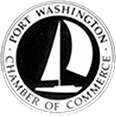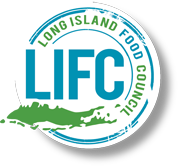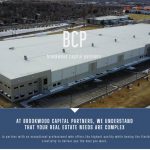For any commercial enterprise, an online presence is ultimately about lead generation and conversion that will boost your business’s bottom line. When you discuss aspects of your online marketing strategy with a web developer, there is a range of tools and techniques to employ. However, landing pages will be close to the top of the list.
What is a landing page?
First, let’s be clear about this subject. A landing page is one which serves a specific online marketing purpose. That purpose is to turn visitors into leads. Let’s compare it with a physical shop. A landing page is like the window display showing today’s freshly made cakes in a bakery, or this week’s special flight offers by a travel agent.
We should also understand what a landing page is not. It does not seek to say everything about your business or its products and services. You have your home page to do that. Instead, it is narrowly aimed at a specific demographic or market, and leading potential customers into your sales funnel.
What’s in a name?
One of the first discussions you are likely to have with your web developer will concern the URL and domain name. Intuitively, you might assume that it makes the most sense to keep all your landing pages in a single domain. A single domain would be the correct way of thinking. It is true especially if you have spent time, money, and energy in building up its traffic, authority and so on. It’s a logical argument but does not always hold true.
When your business consists of multiple areas of services, things could get tricky. For example, a travel agent that specializes in cruises, golf trips, and destination weddings, the primary domain name might not specifically address these. Take a look at The Travel Mechanic as an example. It’s a well-laid-out site that ticks all the digital marketing boxes. However, the domain name itself does not explicitly address any of those three specialty travel services. Here’s an example where creating a new domain that includes the word “weddings” clearly makes sense, and that’s precisely what Hummingbird Web Design did here. You will also note that the landing page is branded and laid out in precisely the same way as the primary domain. When you choose us as your web developer, we’ll help you decide on the most effective domain.
Other businesses might choose a new domain for geographical reasons. Take an example close to home. Suppose you ask Google to “find a web developer near me.” Clearly, having a domain with New York or Chicago or whatever your location might be within the URL will help make things crystal clear to the search bots.
Making your landing page work for you
Putting together a landing page is not a simple task and will mean a certain amount of investment, especially if you decide to purchase a new domain or two. The following tips will help ensure you get the maximum return in terms of conversions and new business. And remember to stick with your online marketing strategy.
1. Keep it simple – you’ve brought your potential lead here for a reason, and that is to get him or her into the sales funnel. Now is not the time for distractions. You’ll see from the example above that there are no navigation bars or additional buttons that could lead people in the wrong direction. There are only calls-to-action where they can book a consultation.
2. Less is more. This is closely related to the above point. Always remember, the landing page is about lead generation. Extra words or superfluous information will only create friction and reduce the number of click-throughs. The same applies to the contact form. Keep it as brief as possible. As the more fields there are to complete, the higher the likelihood of the visitor getting bored and hitting the back button.
3. Get social – your business probably already has social media pages. That’s great, and you can positively promote your landing page there. However, here’s a newsflash. Your visitors and customers are on Facebook, Twitter, and Pinterest, too. Let them do a little digital marketing for you by including social share links on your landing pages.
4. Provide value – it sounds obvious when we are talking about it abstractly. Yet this is one area in which businesses often shoot themselves in the foot. If your landing page is not tailored to meet the needs of your target customer, then it will never deliver a return. Place yourself in the shoes of the customer, or better still, create a customer persona. When you can picture the user-experience, you can better understand your visitors and what will encourage them to proceed into the sales funnel.
5. Test, test, and test again – A landing page is an immensely powerful tool when you get it right. However, there is no silver bullet, and the right approach will depend on your business, your target customers, and your industry sector. Explore different types of landing pages, perform A/B testing, and most important of all, strive for continuous improvement, assessing what works and what doesn’t.
Could your business benefit by speaking with a web developer? Could you be making better use of landing pages to drive more leads into your sales funnel? If so, contact us at Hummingbird Web Design for an easy chat? 516-883-3851 or email nancy@hummingbirdwebdesign.com










Leave A Comment